On Strawboard and Spiderglassine
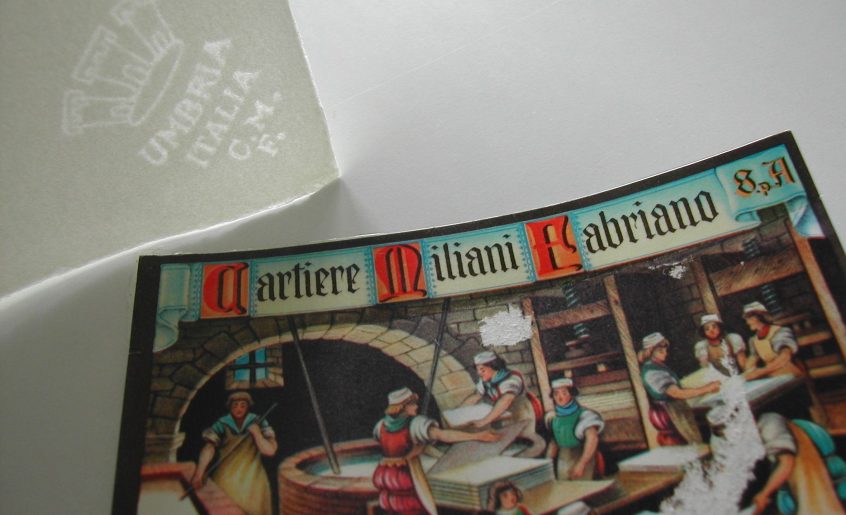
Paper is an ever so versatile material. Basically it is made from plant fibre. In Europe we can use linen, hemp, stinging nettles and cellulose from wood chips. Even asparagus peel and straw can be made into paper. Elsewhere on this planet other plants will be chosen. The underlying principle is the same: while taken from the mould the fibres align and make a mat, some thicker, some thinner. The surface can be smooth or structured. The sheet can be soft like chiffon or rigid like board. Papermaking was known in China as early as 2,000 years ago. To travel westward into Europe the craft took its time. Only from around 700 years ago papermills were common all over Europe, those were water-powered with huge mill-wheels.
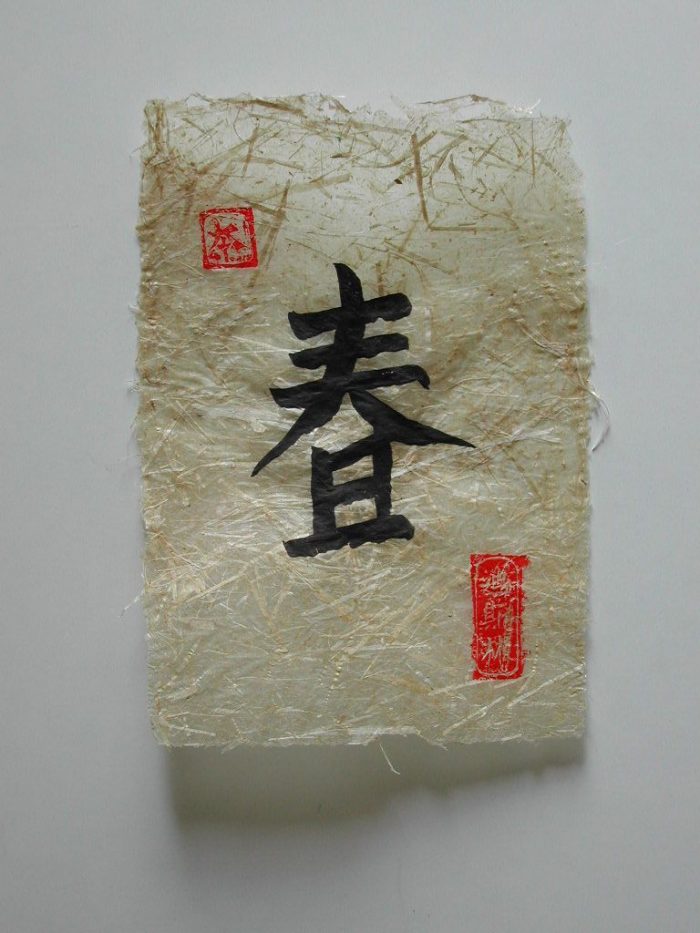
Now, let’s just give this a thought: what might have grown from the triumvirate of movable type, ink and printing press, that Johannes Gutenberg developed back in the 1450s, had not just then something completely new, and, at the same time, so ideally suitable for printing entered the stage in Europe: paper.
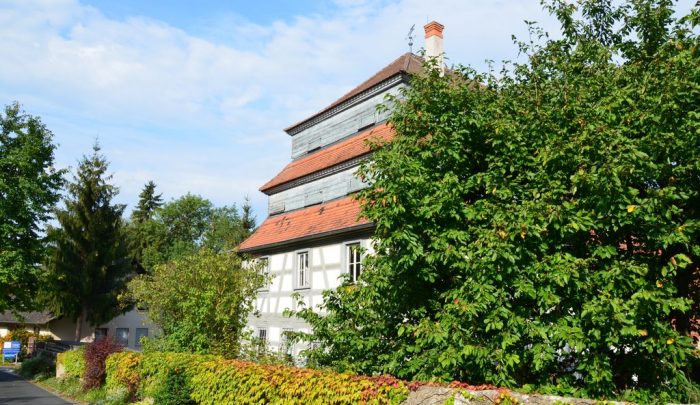
The papermill in Homburg, Markt Triefenstein has been run by the Follmer family for generations. Currently Johannes Follmer is in charge. This papermill, too, is being powered by water that turns a huge mill-wheel. Early in the 19th century the family had to move house, very literally.
The half-timbered building was taken apart and built up again in another location where the water quality was better for papermaking. Today, the papermill is a museum and a place of cultural heritage. Johannes offers to make paper taylor-made, even with specific watermarks, he can manufacture as well. In 2003 he made paper to my specifications and with the papermill‘s own watermark. I used the sheets to print my woodcuts showing scenes from my travels to England, Poland and Italy. The colour woodcut „Minerva“ is also printed on paper made by Johannes.
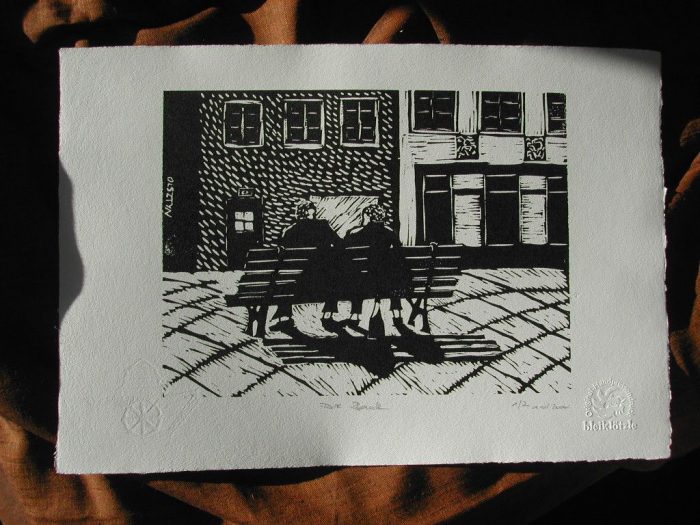
The diversity of paper is stunning. And paper is not just the lifeless stuff, that will obediently take up ink when being printed on. The sheet of paper with all its properties is actively playing its role in the artistic process, it contributes its very own specifics and character and makes itself perceptible in the result. Every sort of paper feels different to the touch, performs in another way in printing, folding, bookbinding, and, particularly when being painted on or in paper batik.
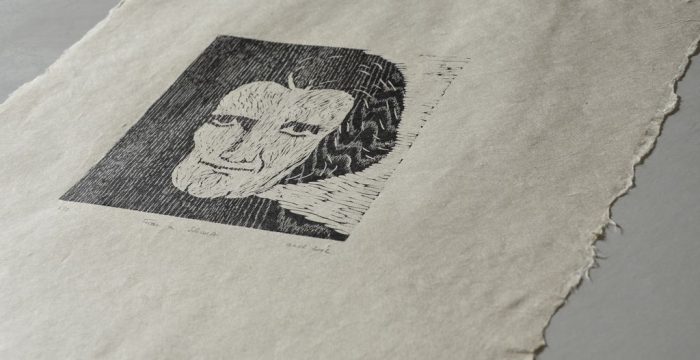
I have worked with many different qualities of paper. There were the delicate, almost translucent ones, handmade in the regions of the Himalaya. Those I used for printing woodcuts like the green dragon or the portrait of Frau in Schwarz. For the woodcut Auf dem Heimweg (On The Way Home) I used handmade Umbria from the Fabriano papermill in Italy. Back in the 13th century this papermill was the centre of the art of papermaking in the whole of Europe.
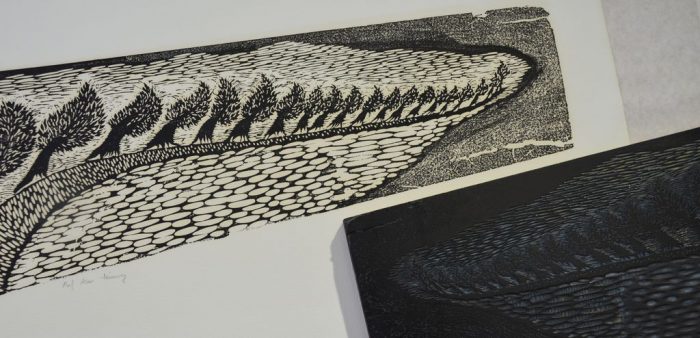
Mould-made paper with deckle-edges can be very similar to handmade paper. These papers are made by papermills like Zerkall or Hahnemühle, Johannot paper is also of that sort. The latter I used for the woodcuts in the work Lushin, the portfolio is made from Hahnemühle paper.
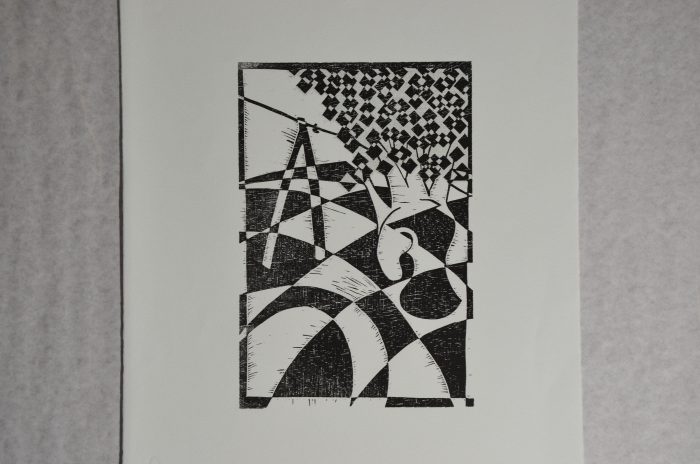
I have used many qualities of paper made by Zerkall, some of which come with the lovely lion-watermark. Sadly this papermill was severely damaged in the disatrous flooding in Ahrtal in summer 2021. In the wake of this the production of mould-made paper has been discontinued at the papermill. This is even more regrettable, since many papermills have gone out of business over the past decades. A good number of paper qualities I liked to work with, are not to be had anymore.
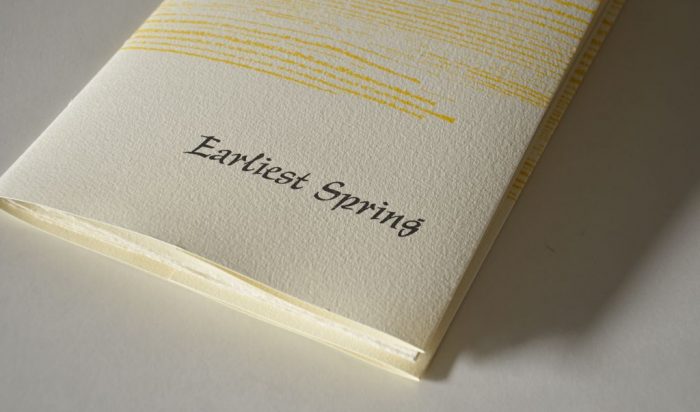
The artist‘s book Earliest Spring is printed on two qualities of Hahnemühle mould-made paper. Both of which I could collect from a colleague who gave up on printing due to his age. He was into intaglio and the papers were thick and heavy.
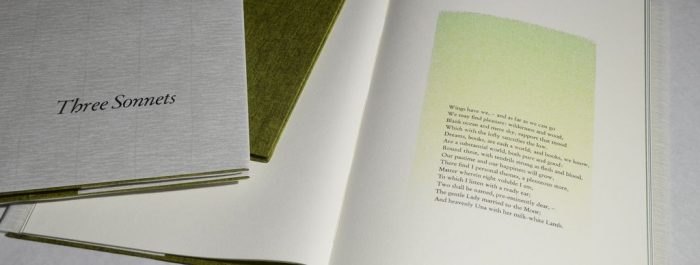
But even modern machine-made papers come with their very own charm. Paperfactory Arjo Wiggins produced a series of qualities by the name of Rives, which came with intriguing surface patterns created by embossing. I have used the variety Basane for the Manarah-issue on wind. Also at Arjo Wiggins the series of Conqueror was produced, of which I used the variety „Contour“ for the recent issue of Manarah on humaneness.
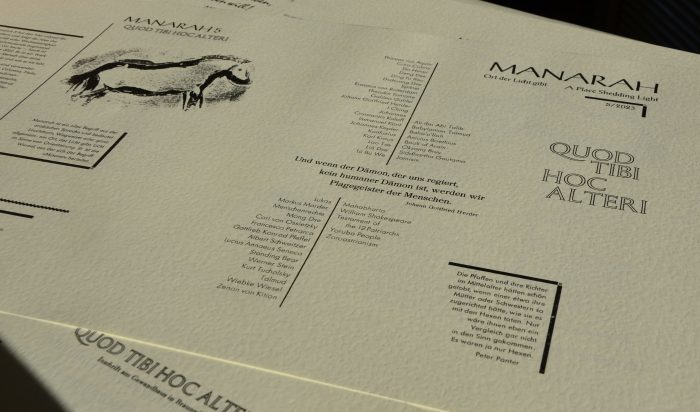
For my first ever artist‘s book Der kleine Niak, I chose a paper with the name Poseidon, then made by Artoz with an exceptional pattern of waterlines resembling waves. In the artist‘s book away, SavileRow Pinstripe, resembling a gentleman‘s suit with pinstripes is combined with grey Gmund Bee, a paper whose surface is finely structured.

And every now and then there will be glassine sheets in the books, either the classic embossed with spiders in their webs, or the modern variety with frost pattern.
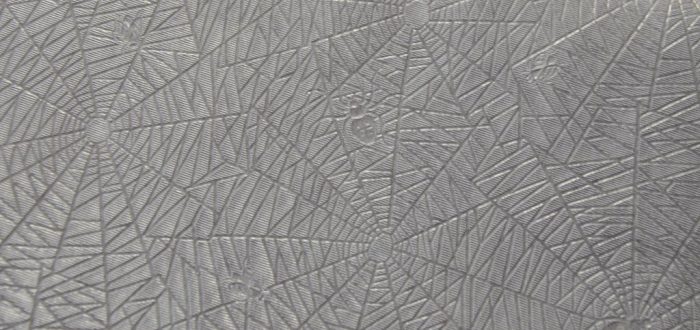
Glassine paper is the little, fragile princess, that demands to be treated with utmost care. The opposite is straw board. A quality the colour of muddy ochre, made from straw, rigid and stubborn. I once could pick up some left over sheets, which I used for the series of lino etchings Vessel and for the artist‘s book Meine Worte fallen wie Steine (My words drop like stones).
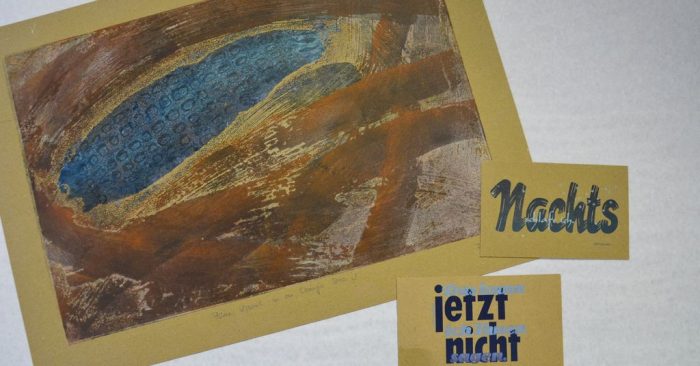
In 2023 the first three artist‘s books in the series Giving Diversity a Home! were printed and I had chosen Lönneberga grön for the paper. This is a quality designed and produced with the idea of sustainabilty in mind: made from recycled fibre and completely with green energy, at Lessebo in Sweden.
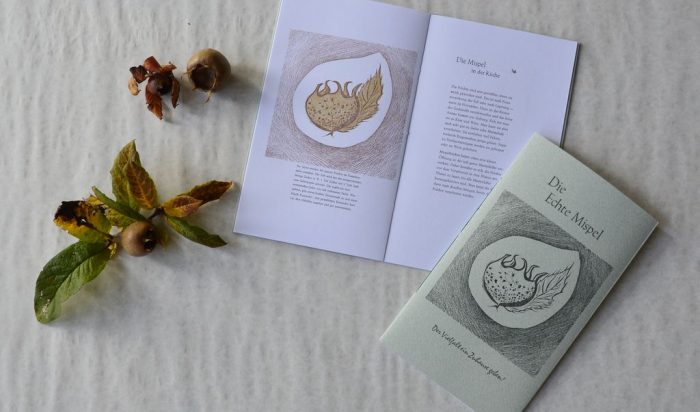
Something very special is calibrated paper. This is a technical paper, sanded down to a defined thickness. It is needed to build an exact packing on the cylinder of a printing press. This is important to achieve a print of good quality when printing from metal type.
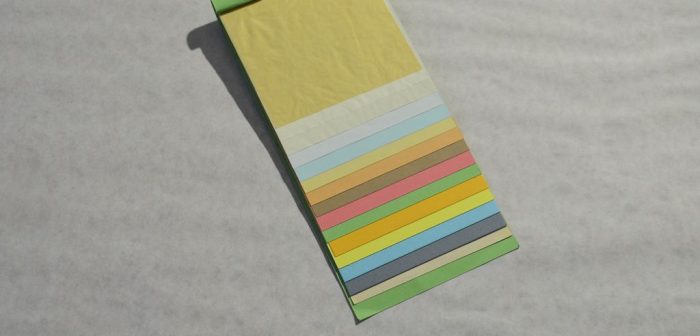
The exact measure is made up for by what sits on the cylinder during the print run. Until some years ago calibrated papers were manufactured in thicknesses ranging from 0.015 mm to 0.5 mm with many intermediate measurements. Each thickness came in its own colour, so they could be well distinguished. I am grateful for Heiner Buser for explaining this to me early on. Thus I could put some of the thinner sheets on stock – their production has since been discontinued.
Contact
For reading
Werner Brennecke „Wie wir Papier machen“ Nora Handpresse, 1997 Düsseldorf
Wolfgang Walenski „Das PapierBuch“, Hg. Roland Golpon, Verlag Beruf+Schule, 1994, Itzehoe
Essay über Papier: „Kommt ein Esel zur Papiermühle“
To be continued on 15 April 2024
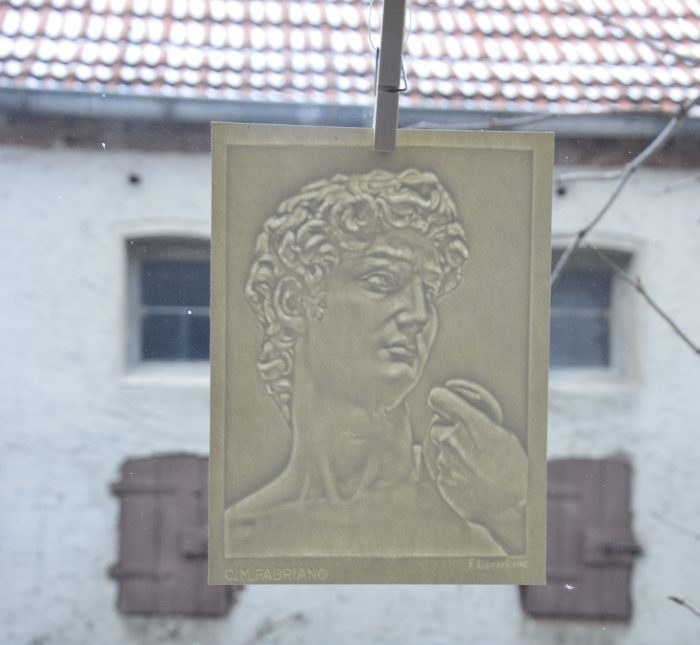
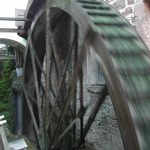
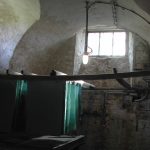


Wonderful! How very interesting.
Truly fascinating work!